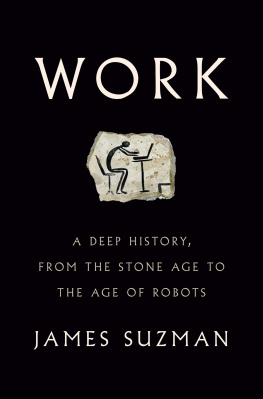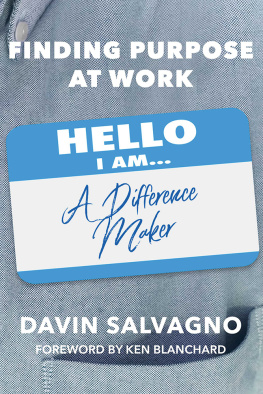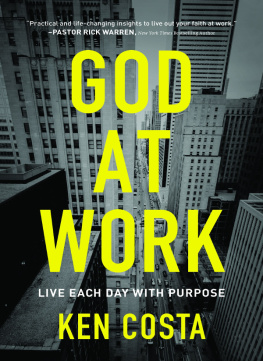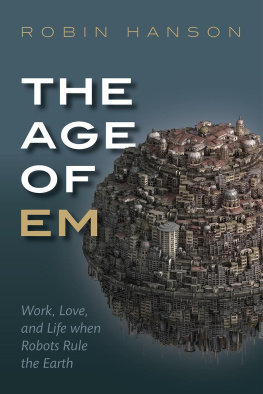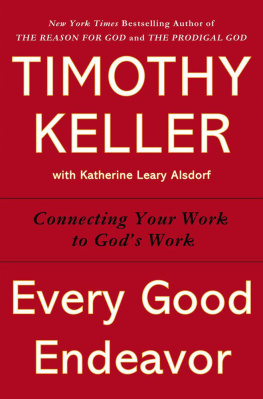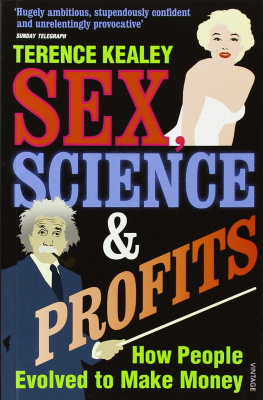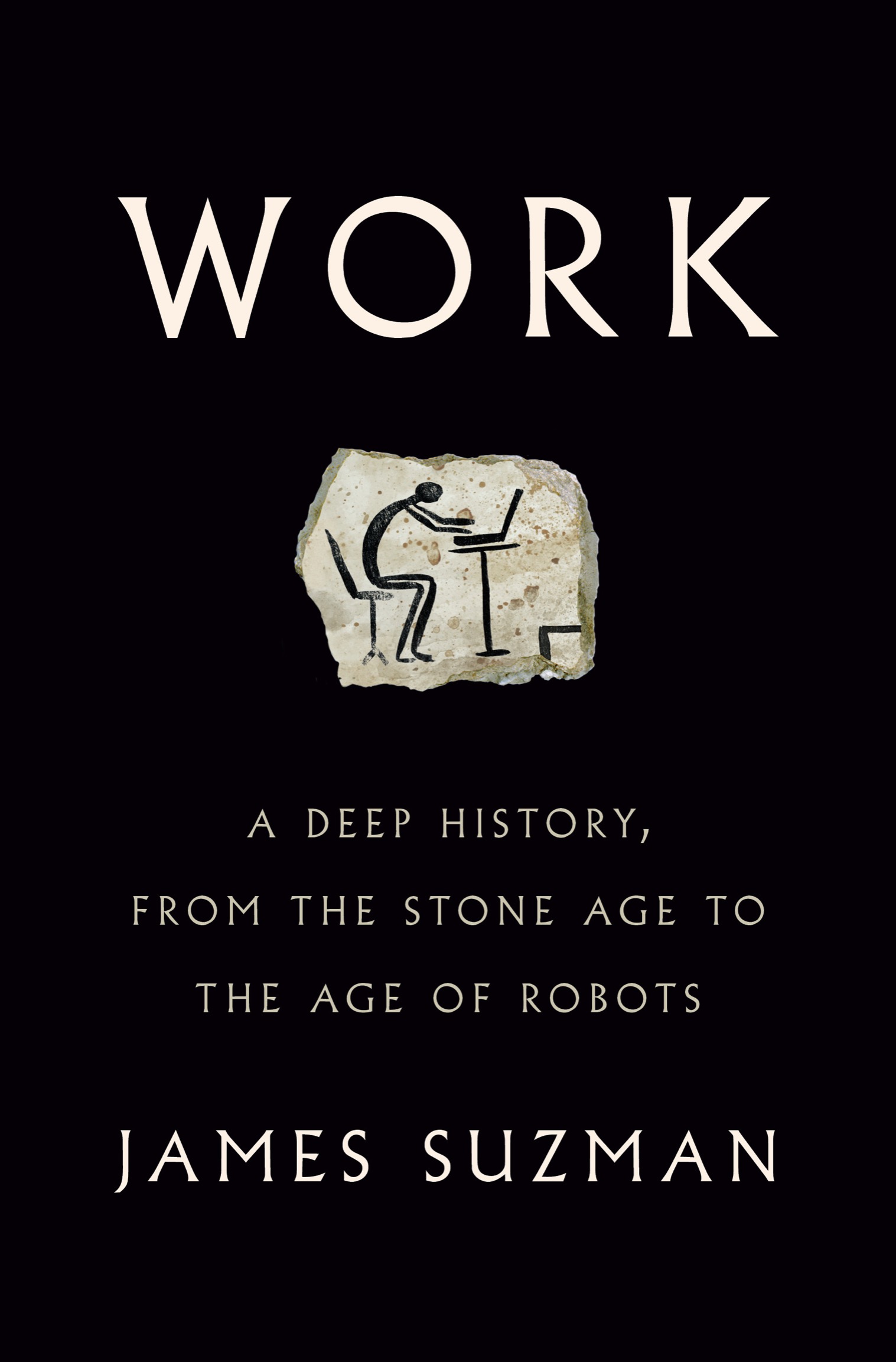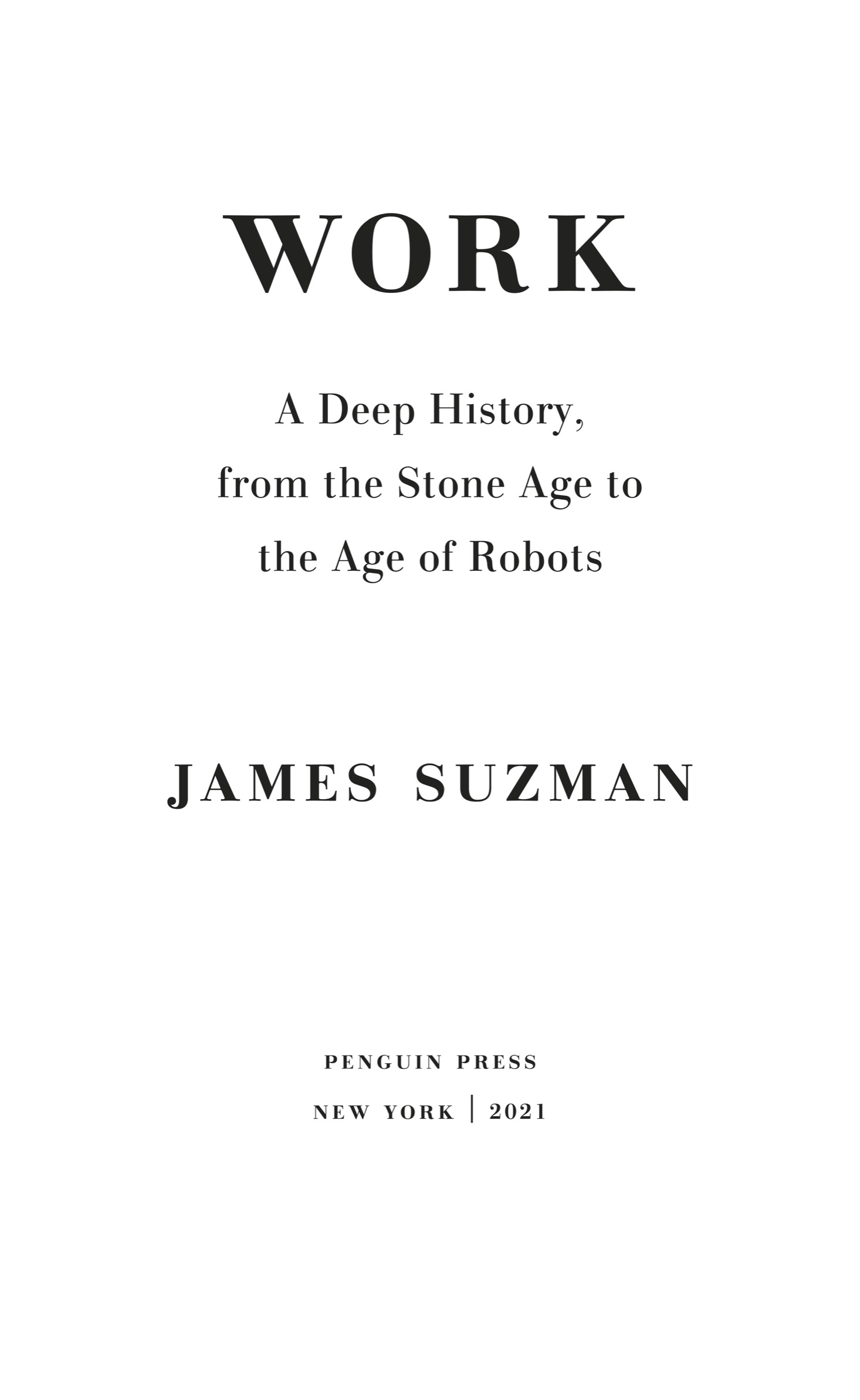Penguin supports copyright. Copyright fuels creativity, encourages diverse voices, promotes free speech, and creates a vibrant culture. Thank you for buying an authorized edition of this book and for complying with copyright laws by not reproducing, scanning, or distributing any part of it in any form without permission. You are supporting writers and allowing Penguin to continue to publish books for every reader.
First published in Great Britain by Bloomsbury Circus, part of the Bloomsbury Publishing Plc, 2020.
Names: Suzman, James, author.
Title: Work : a deep history, from the stone age to the age of robots / James Suzman.
Description: New York : Penguin Press, 2021. | Includes bibliographical references and index.
Identifiers: LCCN 2020040534 (print) | LCCN 2020040535 (ebook) | ISBN 9780525561750 (hardcover) | ISBN 9780525561767 (ebook)
Subjects: LCSH: WorkHistory.
Classification: LCC HD4841 .S88 2021 (print) | LCC HD4841 (ebook) | DDC 331.09dc23
Illustrations
. A male masked weaver in the final stages of completing a nest
. An Acheulean hand-ax
. Ju/hoan hunters kit
. Relative brain sizes of ancestral humans
. Reconstruction of a 70,00075,000-year-old Nassarius shell necklace recovered from Blombos Cave in South Africa
. Independent centers of plant domestication
. Reconstruction of a Natufian stone sickle
. A monolithic zookeeper at Gbekli Tepe
. Neolithic Middle East
. The Oberkassel Puppy meets Aibo
. Timeline indicating estimated dates and location of major animal domestications
. 10,000-year-old skeleton of a 2,200 lb, six-foot-tall auroch recovered from Vig in Denmark in 1905
. Proportion of the population living in urban areas, 15002016
. The worlds oldest pay record: a cuneiform tablet documenting payment of workers in beer c. 3000 bc
. An aelopilethe first steam engine as described by Hero of Alexander in ad 50
. Changes in weekly working hours in the UK, USA, and France, 18702000
. Graph showing real GDP per capita in the USA nearly doubles between 1980 and 2015 but real median incomes stagnate
. Changes in household income, USA 19452015
. Clarks tri-sector model indicating how service-sector sector employment offset declines in primary and secondary industries
INTRODUCTION
THE ECONOMIC PROBLEM
The first industrial revolution was coughed out of the soot-blackened chimneys of coal-fired steam engines; the second leaped from electric wall sockets; and the third took the form of the electronic microprocessor. Now we are in the midst of a fourth industrial revolution, born of the union of a host of new digital, biological, and physical technologies, and we are told that it will be exponentially more transformative than its predecessors. Even so, no one is yet quite sure how it will play out, beyond the fact that ever more tasks in our factories, businesses, and homes will be undertaken by automated cyber-physical systems animated by machine-learning algorithms.
For some, the prospect of an automated future heralds an era of robotic convenience. For others, it is another fateful step on the journey toward a cybernetic dystopia. But for many, the prospect of an automated future raises only one immediate question: what will happen if a robot takes my job?
For those in professions that have up to now been immune from technological redundancy, the rise of the job-eating robots manifests in the mundane: the choruses of robotic greetings and reprimands that emanate from the ranks of automated tellers in supermarkets or the clumsy algorithms that both guide and frustrate our adventures in the digital universe.
For the hundreds of millions of unemployed people scraping a living in the corrugated-iron margins of developing countries, where economic growth is driven ever more by the marriage of cutting-edge technology and capital and so generates few new jobs, automation is an altogether more immediate concern. It is also an immediate concern for ranks of semi-skilled workers in industrialized economies whose only option is to strike to save their jobs from automata whose principal virtue is that they never go on strike. And, even if it doesnt feel like it just yet, the writing is on the wall for some in highly skilled professions too. With artificial intelligence now designing better artificial intelligence than people can, it looks like we have been tricked by our own ingenuity into turning our factories, offices, and workplaces into devils workshops that will leave our hands idle and rob our lives of purpose.
If so, then we are right to worry. After all, we work to live and live to work and are capable of finding meaning, satisfaction, and pride in almost any job: from the rhythmic monotony of mopping floors to gaming tax loopholes. The work we do also defines who we are; determines our future prospects; dictates where and with whom we spend most of our time; mediates our sense of self-worth; molds many of our values; and orients our political loyalties. So much so that we sing the praises of strivers, decry the laziness of shirkers, and the goal of universal employment remains a mantra for politicians of all stripes.
Beneath this lies the conviction that we are genetically hardwired to work and that our species destiny has been shaped by a unique convergence of purposefulness, intelligence, and industriousness that has enabled us to build societies that are so much more than the sum of their parts.
Our anxieties about an automated future contrast with the optimism of many thinkers and dreamers who, ever since the first stirrings of the Industrial Revolution, believed that automation was the key that would unlock an economic utopia. People like Adam Smith, the founding father of economics, who in 1776 sung the praises of the very pretty machines that he believed would in time facilitate and abridge labor, But none made the case as comprehensively as the twentieth centurys most influential economist, John Maynard Keynes. He predicted in 1930 that by the early twenty-first century capital growth, improving productivity, and technological advances should have brought us to the foothills of an economic promised land in which everybodys basic needs were easily satisfied and where, as a result, nobody worked more than fifteen hours in a week.
We passed the productivity and capital growth thresholds Keynes calculated would need to be met to get there some decades ago. Most of us still work just as hard as our grandparents and great-grandparents did, and our governments remain as fixated on economic growth and employment creation as at any point in our recent history. More than this, with private and state pension funds groaning under the weight of their obligations to increasingly aged populations, many of us are expected to work almost a decade longer than we did half a century ago; and despite unprecedented advances in technology and productivity in some of the worlds most advanced economies like Japan and South Korea, hundreds of avoidable deaths every year are now officially accredited to people logging eye-watering levels of overtime.

